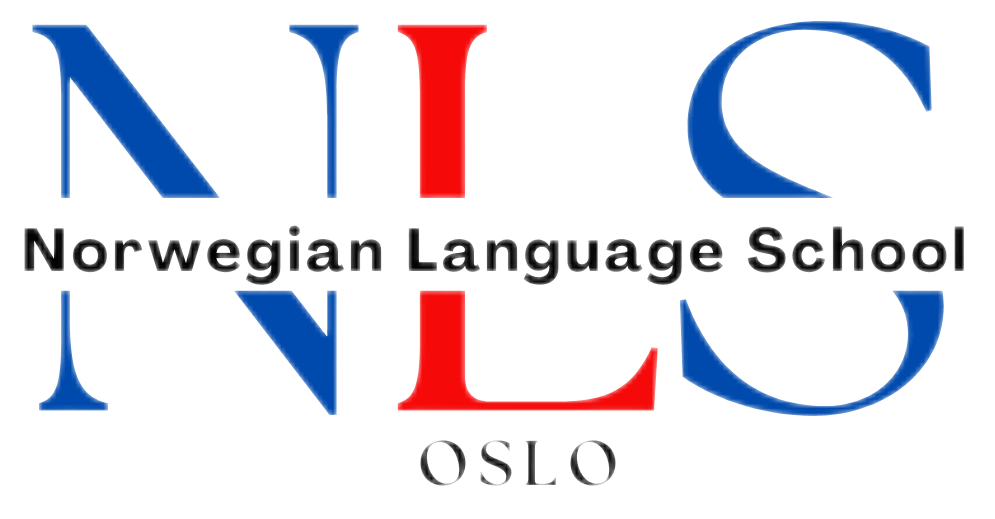

Mastering Norskprøven – Your Comprehensive Guide to Success
Table of Contents
ToggleIntroduction
Learning a new language can be both exhilarating and daunting. For many people, proficiency in Norwegian is a gateway to academic opportunities, career advancements, and seamless integration into Norway’s vibrant social and cultural tapestry. The Norskprøven, or Norwegian Language Test, is designed to evaluate the language competencies of non-native speakers, and it is a crucial step for anyone looking to study, work, or settle in Norway. Passing Norskprøven demonstrates not just the ability to communicate effectively but also a deep understanding of Norwegian culture and society.
If you’re considering taking the Norskprøven, you have likely encountered a multitude of questions. What does the test consist of? How can you prepare effectively? How do you register, and when should you take it? These are all common concerns that deserve clear, in-depth answers. In this article, we’ll explore the nuts and bolts of Norskprøven. We’ll discuss the exam’s structure, the common pitfalls, top preparation strategies, and how enrolling in a specialized preparation course—like the ones at NLS Norwegian Language School in Oslo—can help you succeed.
Remember, consistent practice and proper guidance are the key ingredients for mastering Norwegian. With the right resources and dedication, you can walk into your exam fully prepared. And to help you get there, we’ll provide details about our Norskprøven Preparation Course, including how to register and get started. For those who are eager to begin or continue their journey toward Norwegian proficiency, click here to register for our preparation course at NLS Norwegian Language School in Oslo.
Understanding Norskprøven
The Norskprøven is Norway’s official language exam for non-native speakers. It is conducted under the authority of Kompetanse Norge (formerly Vox), which oversees adult education and lifelong learning. This exam is designed to measure how well you can use Norwegian in real-life scenarios—such as conversing with your neighbors, understanding instructions at the workplace, or participating in academic settings.
The exam not only tests grammar and vocabulary but also contextual knowledge. For instance, you might be asked to read newspaper articles in Norwegian, respond to questions about a short dialogue, or write an essay on a specific societal topic. Success in Norskprøven is generally required for certain residency permits and citizenship applications. For academic enrollment, some universities or colleges might require proof of Norwegian proficiency, and Norskprøven is a popular option to fulfill that requirement.
The test covers multiple levels, corresponding to the Common European Framework of Reference for Languages (CEFR). Typically, these levels range from A2 (basic user) through B1 and B2 (independent user). Some advanced versions may also be available, helping you demonstrate a higher proficiency level. After you complete the exam, your results will indicate the CEFR level at which you’ve tested, and this is reflected on your official certificate.
While there’s no age limit to take the exam, most test-takers are either adult learners, international students, or long-term residents looking to formalize their language skills. Regardless of your background, the right preparation strategies can pave the way for outstanding results.
The Structure of Norskprøven
To ace the Norskprøven, it’s crucial to understand its structure. Typically, the exam comprises the following sections:
-
Reading Comprehension (Leseforståelse)
This section evaluates your ability to understand written Norwegian in a variety of contexts. You might encounter short articles, public notices, emails, or instructions that simulate everyday reading experiences. The format could include multiple-choice questions, fill-in-the-blank tasks, or questions requiring brief written answers. -
Listening Comprehension (Lytteforståelse)
This part tests your capacity to follow spoken Norwegian. You’ll hear dialogues, announcements, or short lectures in Norwegian. Afterwards, you’ll answer a series of questions designed to gauge your understanding of the material. The speaker’s accent may vary slightly, which simulates real-life encounters. Active listening strategies—like note-taking and summarizing—are invaluable here. -
Written Production (Skriftlig framstilling)
This segment assesses your written communication skills, including grammar, vocabulary, coherence, and overall text structure. You might be asked to compose emails, short essays, letters, or narratives. The topics often reflect real-life situations, such as writing a complaint to a landlord, describing a personal experience, or summarizing an article. -
Oral Production and Interaction (Muntlig framføring og interaksjon)
Divided into two parts—individual presentation and interactive conversation—this section measures your speaking ability. You’ll discuss a pre-selected topic or respond spontaneously to questions posed by an examiner. The interactive portion might involve role-playing scenarios or group discussions, where examiners observe your fluency, vocabulary range, pronunciation, and ability to sustain a conversation.
Scoring and CEFR Levels
Your performance in each section determines whether you meet the competencies for A2, B1, or B2. Typically, you need to achieve the required CEFR standard in each of the four skill areas—Reading, Listening, Writing, and Speaking—to claim the corresponding level. If your performance varies by skill area, you might end up with a mixed-level result (e.g., B1 in reading but A2 in writing).
Exam Dates and Registration
Norskprøven is offered multiple times a year. Registration is often done through official portals like Kompetanse Norge’s website, local adult education centers, or private language schools. However, places can fill up fast, and deadlines are strictly enforced. This is why it’s paramount to plan well in advance. If you’re aiming for a particular deadline—like applying for citizenship or enrolling in a university—keep track of registration periods and exam schedules.
Common Challenges and Pitfalls
-
Time Management
Each exam section has a strict time limit. Learners often struggle with pacing, especially in the reading and writing sections. During preparation, take timed practice exams to build familiarity with the time constraints. -
Nervousness and Anxiety
Language exams can be stressful, especially when your future opportunities may hinge on the results. Test anxiety is common, but it can be mitigated by consistent practice, realistic simulations, and relaxation techniques like deep breathing or short walks before the exam. -
Over-Reliance on Memorization
Although learning new words and phrases is important, relying purely on memorization—without understanding context—can be detrimental. Norskprøven tests real-world application. Make sure you practice language skills in context, such as reading actual Norwegian newspapers or listening to Norwegian podcasts. -
Pronunciation and Fluency
In the oral exam, clarity and fluency are vital. Repetitive mistakes in intonation or pronunciation can hinder communication. Engaging in conversation with native speakers or participating in language exchange groups is beneficial for improving your spoken skills. -
Reading Complex Texts
Norwegian has a rich literary tradition, and even newspaper articles can be quite dense for learners. Gradually increase the difficulty of your reading materials. Start with children’s stories, then move to light news pieces, and eventually tackle more complex articles.
Preparation Strategies
1. Take a Diagnostic Test
Before you start a rigorous study schedule, it’s important to know your current level. Diagnostic tests can reveal your strengths and weaknesses, enabling you to tailor your study plan accordingly.
2. Structured Courses
Enrolling in a specialized preparation program can streamline your efforts. These courses are designed to cover exam-specific topics, provide mock tests, and offer personalized feedback. They ensure that your language learning is aligned with Norskprøven requirements. One of the best options for such specialized training is the NLS Norwegian Language School in Oslo, known for its track record in helping students excel on the Norskprøven. If you’re ready to take that step, click here to enroll in our Norskprøven Course.
3. Consistent Practice with Authentic Materials
Whenever possible, immerse yourself in Norwegian language sources—newspapers like Aftenposten or VG, TV programs such as NRK’s news broadcasts, and Norwegian radio shows. This not only builds vocabulary but also helps you pick up colloquialisms and native speech patterns.
4. Develop All Four Skills in Parallel
Reading, writing, listening, and speaking should be practiced equally. Tailoring your study schedule to address each skill ensures balanced proficiency. For instance, you might dedicate Mondays to reading comprehension, Tuesdays to listening exercises, Wednesdays to writing practice, and Thursdays to speaking tasks.
5. Use Past Exams and Mock Tests
Past papers offer invaluable insights. They reveal the format, difficulty level, and question patterns. Simulating exam-like conditions can reduce anxiety on the test day and help you refine your time-management skills.
6. Create a Vocabulary Notebook
Vocabulary retention is improved through frequent review. Maintain a notebook of new words and phrases, and revisit them regularly. Emphasize words and expressions that are relevant to everyday life and likely to appear on the exam.
7. Focus on Grammar and Sentence Structure
Grammar mistakes can be a stumbling block, particularly in the writing and speaking sections. Make sure to review key grammar points such as verb conjugations, noun genders, definite/indefinite articles, and sentence word order.
8. Seek Feedback
A tutor or study partner can provide constructive critiques, helping you identify weak spots. Whether it’s improving your accent, refining your essays, or clarifying tricky grammar rules, personalized feedback can accelerate your learning.
Why Choose a Specialized Prep Course?
Preparing for the Norskprøven independently is feasible, but it can be overwhelming. Language schools often have experienced instructors who are familiar with the exam’s nuances. They can guide you on the finer aspects of test-taking—like how to approach the oral interview or structure your written essays.
At NLS Norwegian Language School in Oslo, our instructors are seasoned educators who understand the challenges faced by adult learners. Our curriculum is specifically designed to meet the needs of test-takers, focusing on real-world applications and situational learning to improve your skills across the board. The benefits of enrolling in an NLS course include:
-
Comprehensive Study Materials: You’ll have access to textbooks, past exam papers, practice exercises, and multimedia resources.
-
Interactive Learning Environment: Classes are dynamic, involving group discussions, debates, and role-playing activities that mirror exam scenarios.
-
Feedback and Personalized Coaching: Teachers provide individualized feedback, ensuring that you get the attention you need to improve.
-
Flexible Scheduling: We offer various class times, including weekend and evening sessions, to accommodate working professionals.
If you’re serious about acing the Norskprøven, consider joining one of our specialized courses. With the right guidance, you can turn the exam from a daunting challenge into an attainable achievement. Click here to register for our Norskprøven Course and let us help you reach your Norwegian language goals.
Exam Day Tips
-
Arrive Early
Plan to arrive at the testing center at least 30 minutes before the scheduled start time. This buffer helps you settle in and handle any last-minute formalities calmly. -
Bring the Necessary Documents
Typically, you’ll need a valid ID (like a passport or national ID) and your test registration confirmation. Double-check the requirements beforehand. -
Stay Hydrated and Bring Healthy Snacks
High-stress situations can deplete your energy. Pack water and light snacks (like fruits or nuts) to keep your energy levels stable throughout the exam. -
Mind the Instructions
Read and listen to all instructions carefully. Misinterpreting a task can drastically affect your score. If you’re unsure about any instructions, politely ask the examiner for clarification (if allowed). -
Stay Focused and Calm
Regardless of the section, try not to get stuck on one question for too long. If you find yourself struggling, move on and come back if time permits. -
Review Your Answers
If you finish a section early, use the remaining time to review and catch any careless errors. Simple mistakes—like missing negations or not answering the entire question—can cost you valuable points.
Life After Norskprøven
Passing Norskprøven is a significant milestone that opens up new possibilities in Norway. Whether you’re aiming for permanent residency, citizenship, or a university degree, achieving a good result validates your language competency in a formal setting. Beyond that, strong Norwegian language skills enrich your day-to-day life—enabling you to build deeper relationships with Norwegians, understand local customs, and fully participate in Norway’s vibrant cultural and social circles.
If you don’t pass on your first attempt, don’t be discouraged. Many learners take the exam multiple times to achieve their desired CEFR level. Each attempt, however, becomes easier because you gain invaluable experience about the test format and learn to cope with exam stress better.
Conclusion
Mastering the Norwegian language through the Norskprøven is a journey that demands commitment, the right resources, and proven strategies. From understanding the exam’s format to honing your reading, writing, listening, and speaking skills, every step brings you closer to attaining fluency. A structured course, such as the one offered at NLS Norwegian Language School in Oslo, can significantly boost your confidence and competence, guiding you to success in one of the most important exams you’ll undertake in Norway.
If you’re ready to embark on—or continue—your Norwegian language journey, we invite you to join us. With our supportive educational community, expert instructors, and comprehensive exam preparation, you’ll be well on your way to achieving your Norskprøven goals. Don’t let uncertainty hold you back—invest in your future by enrolling in our course today.
Click here to register for our Norskprøven Preparation Course
If you want to learn Norwegian, you can register for classes here. We look forward to hearing from you and helping you become fluent in Norwegian.





